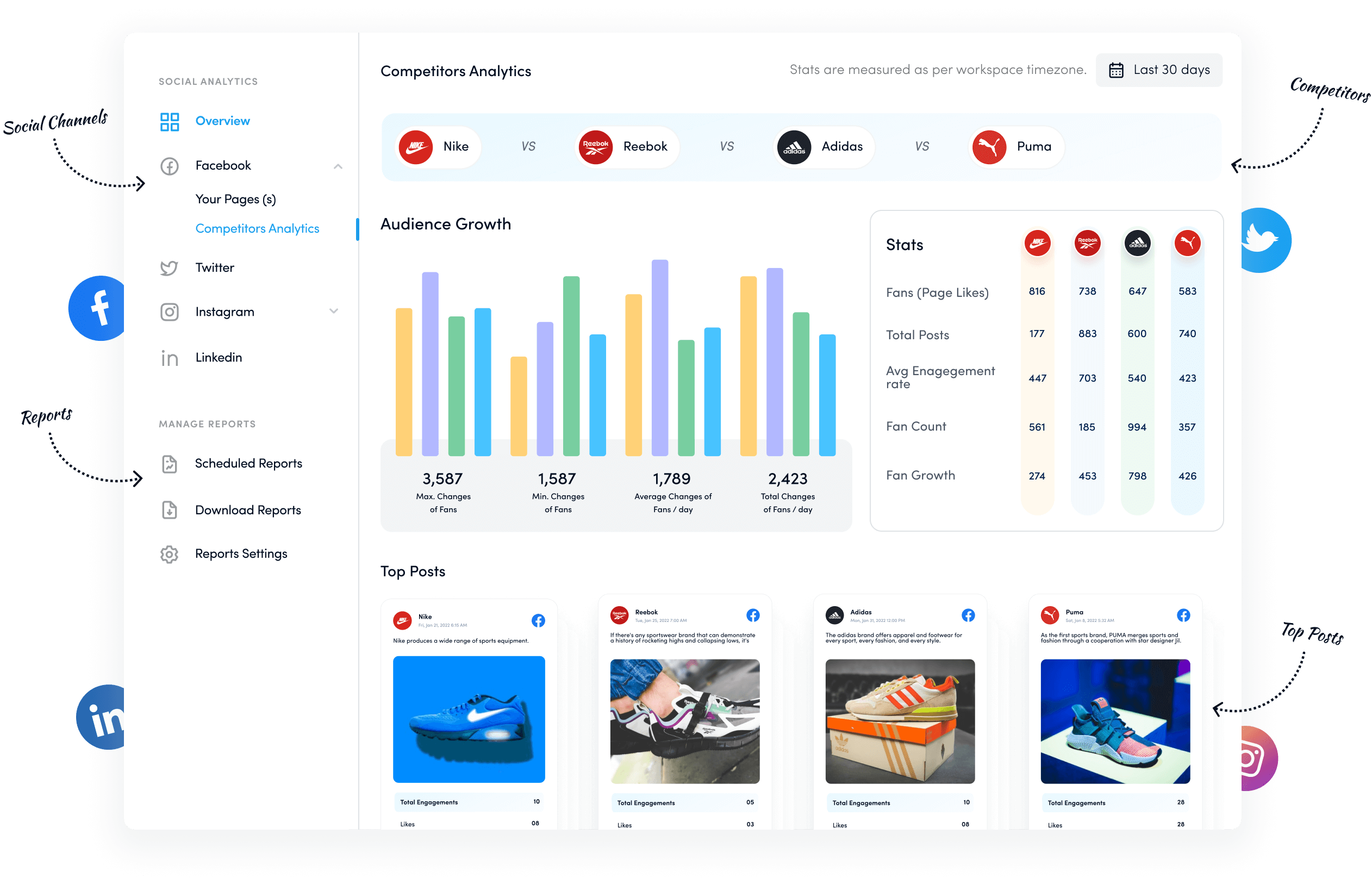Bulk-generate & schedule posts in seconds with Smart Scheduling. Try now!
How to Set up a Social Media Budget?

Curious about maximizing your social media impact without overspending? Learn to set up a budget—it’s like a financial guide for your online success. Let’s break down the basics of creating a smart, simple budget that ensures your brand shines in the vast world of social media.
Experience organized workflow with a unified social media management platform for agencies.

12 steps to set up a social media budget
Setting up a social media budget is important to any digital marketing strategy. Here are steps to help you set up a social media budget:
1. Define your goals:
Clearly outline your social media marketing goals. Whether it’s increasing brand awareness, driving website traffic, generating leads, or sales, your goals will impact your budget allocation.

2. Identify your target audience:
Utilize the social media platforms that are most frequented by your target audience. Focus your budget on platforms that align with your audience demographics and behaviors.

3. Choose the right platforms:
Not all social media platforms are suitable for every business. Select social media platforms that support your goals and audience. Popular choices include Facebook, Instagram, Twitter, LinkedIn, and Pinterest.
Related Read: Choosing The Right Social Media Marketing Platforms

4. Research ad costs:
If you plan to run paid advertisements, research the costs associated with each platform. Consider factors like CPC (Cost Per Click), CPM (Cost Per Thousand Impressions), and daily or monthly budgets.

5. Determine content creation costs:
Assess the resources required for creating engaging content. This includes graphics, videos, copywriting, and other multimedia elements. Allocate budget for tools or professionals if needed.

6. Allocate budget for social media tools:
You might invest in social media management tools, analytics platforms, or other software, depending on your needs. These tools help streamline processes and improve the efficiency of your social media efforts.

7. Consider employee costs:
If you have a dedicated social media team or if team members contribute to social media efforts, factor in their salaries, benefits, and training costs.
Read Up: How to Build an Accomplished Social Media Team for Your Agency

8. Monitor and adjust:
Regularly review your marketing performance and adjust your budget accordingly. If particular strategies deliver better results, consider allocating more budget to those areas.
Social Media Analytics Fine-tune your social media strategy for success with in-depth analytics and white-labeled reports.

9. Set a testing budget:
Set aside money to test new strategies, ad creatives, or audience targeting. This allows you to experiment and optimize your approach based on what works best.

10. Track ROI:
Establish key performance indicators (KPIs) to measure the success of your social media efforts. Track metrics such as engagement, click-through rates, conversions, and overall ROI to assess the effectiveness of your budget allocation.

11. Adapt to changes:
Social media algorithms and trends change, so be prepared to adapt your strategy. Stay informed about industry updates and adjust your budget to capitalize on new opportunities.

12. Benchmark against competitors:
Research your competitors’ social media strategies and budgets. While you shouldn’t copy them outright, understanding industry benchmarks can help you make more informed decisions about your budget.
Outshine your competitors on Instagram with our free Instagram competitor analytics tool!

That’s it; now you can create a comprehensive social media budget that aligns with your business goals and allows for flexibility and optimization over time.
FAQs
What is a typical social media budget?
A typical social media budget varies widely depending on business size and goals, ranging from a few hundred to several thousand dollars monthly. Small businesses start with around $500-$1,000 monthly, while larger enterprises could invest tens of thousands for comprehensive strategies.
What is a realistic marketing budget?
A realistic marketing budget depends on factors like business size and industry. Still, small businesses often allocate 7-12% of their revenue, while larger companies may invest 10% or more for a comprehensive marketing strategy.
Recommended for you


Powerful social media management software
14-day free trial - No credit card required.



